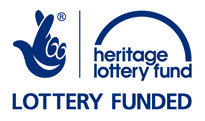As far as possible the original material has been transcribed consistent with the following guidelines, although there might be exceptions to this.
- Dates. These are given in the text as written but standardised to modern calendar form in the online archive date field or letter headers within the PDF downloads. This means that, for example, a letter dated as 24 February 1735 will be indexed as 24 February 1736 in the modern calendar form. Until September 1752 the new year for dating purposes commenced on 25th March
- Square brackets [ ] are used to indicate
- interpolated words or extensions of obscure abbreviations
- transcriber’s annotations showing, for example, marginal notes or annotations to the original document in another hand
- Angled brackets < > are used around text that is illegible, missing or unclear to the transcriber. We welcome feedback from any users of the collection who can help resolve these outstanding queries
- Text, spellings, capitalisation and grammar are transcribed as entered in the original document.
- Abbreviations and shortened forms of forenames that are still recognisable today are generally left as written, eg. ‘acct’, ‘recd’, ‘Wm’, ‘Elizt’
- Commonly found terms not usually expanded in the transcripts
- Inst : Instant – current month eg. “your lre of 4th inst” = “your letter of the 4th of this month”
- Lre: Letter
- Ult/Ulto: Ultimo – previous month eg. “your lre of 4th ult” = “your letter of the 4th of last month”
- Vizt: videlicet – namely or ‘i.e.’
- Presentation Sequence. In the chief agent copy letter books, bills of exchange are typically entered as separate items to letters, and often precede the copy letters with which the originals were sent. To avoid losing this context the relevant bills are included within the database entry for the covering letter, and following the letter. The same sequencing is used within the PDF transcripts, ie. bills follow the letters.
- Weights/measures. These have generally been shown in modern form, eg. the £ sign is generally shown as used now, in front of the numeral instead, as was often the case at the time, as an ‘L’ above or at rear of the numeral.

